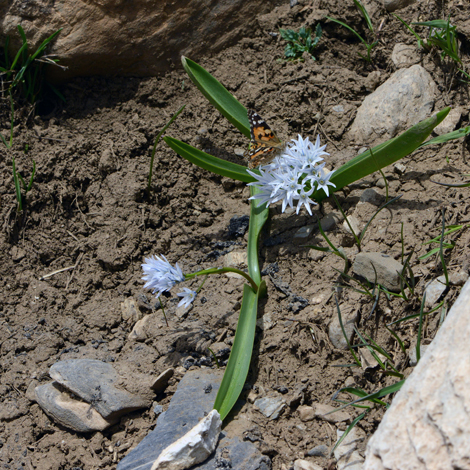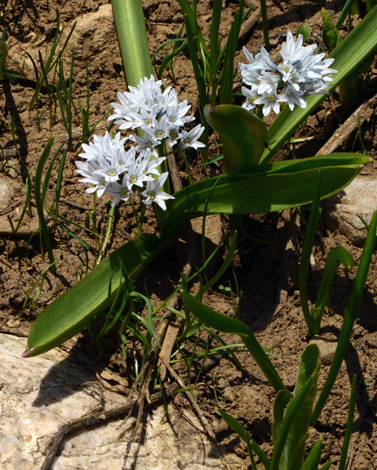Puschkinia bilgineri Endemic


This expedition took us on one of the highest paved roads in Europe, at 9,822 feet above sea level where many of the mountain slopes were covered in snow even in June. The first impression was that it was a waste of time botanically because little could surely be growing in such harsh conditions. Nothing could have been further from the truth. In the rocky, snowless parts the plants had shot up quickly and many were in full flower making beautiful little miniature alpine gardens amongst the rocks. Even at that height, the Painted lady butterfly in the left hand side photo was at home among the alpines.
Taxonomically Puschkinia bilgineri is a close relative of Chionodoxa and Scilla but this species was a good example of what happens in a botanical hotspot like Turkey: it is a relatively new discovery, by an amateur botanist then recognised and described for the first time only in 2014 by Professor Hasan Yıldırım. The Puschkinia genus is named in recognition of work by Russian botanist, Count Apollo Mussin-Pushkin who led botanical expeditions to the Caucasus with his friend Friedrich Marschall von Bieberstein in the early 19th Century.
At first it was recognised that there was a different looking Puschkinia species growing on the slopes of the Karabet Pass, so it was known simply as Puschkinia sp. Now, in the few references to this plant, only the Karabet pass is mentioned but it isn't to far from both Iranian and Georgian mountains so I wouldn't be surprised to find it discovered there. For now it is an Turkish endemic.
Snowy hillsides of the Karabet Pass, Eastern Turkey, 3rd June 2021
Added on 20th January 2021





